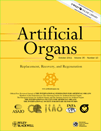The Influence of Hemodialysis Membrane Permeability on Serum Paraoxonase-1 Activity and Oxidative Status Parameters
Abstract
We aimed to measure oxidative stress parameters and paraoxonase-1 (PON-1) enzyme activities in chronic hemodialysis (HD) patients and to investigate whether HD membrane permeability has any influence on those measures. Forty-seven HD patients and 24 controls were enrolled. At the first step of the study, all HD patients had undergone HD treatment via “low-flux” membranes for 4 weeks. At the second step of the study, the membranes were switched to “high-flux” membranes and HD treatments were also performed via “high-flux” membranes for 4 weeks. Blood samples were withdrawn after completion of 4 weeks treatment for each membrane. Total oxidant status (TOS), total antioxidant status (TAS), and paraoxonase and arylesterase activities were measured in blood samples of the patients and the controls. TOS and oxidative stress index (OSI) of both membranes were higher than controls (all, P < 0.05), while TAS and paraoxonase and arylesterase activities were lower (all P < 0.05). Paraoxonase (P < 0.05, r = −0.437 and P < 0.05, r = −0.453, respectively) and arylesterase (P < 0.05, r = −0.333 and P < 0.05, r = −0.371, respectively) activities of “low-flux” and “high-flux” membranes were inversely correlated with OSI. There were no significant differences between “low-flux” and “high-flux” membranes in regard to oxidative stress parameters or PON-1 enzyme activities (all, P > 0.05). HD patients have increased oxidative stress and decreased serum PON-1 activities inversely correlated with oxidative stress. Membrane permeability seems to have no influence on oxidative stress parameters and PON-1 enzyme activities.




